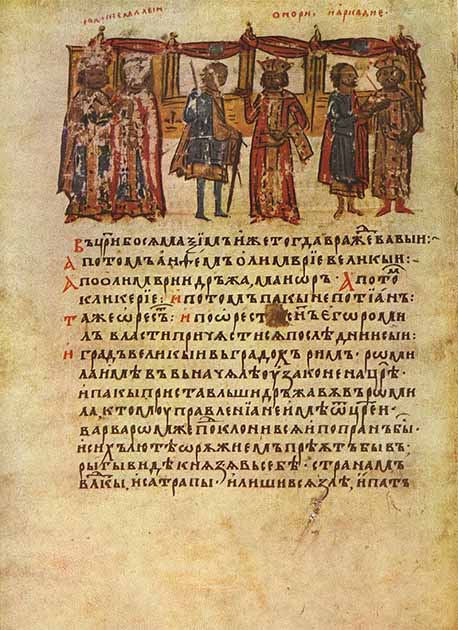
The Byzantine Emperors 395 – 491 AD
The Byzantine Emperors witnessed the disintegration of the western Roman Empire which did not survive past the fifth century. Contrary to the latter, the Byzantine Empire would subsist the successive waves of Germanic invasions to endure for another thousand years.
During his reign, Emperor Theodosius I (379–395 AD) succeeded in mitigating the disastrous aftermath of the Roman defeat of Adrianople of 378 in the hands of the Visigoths during which his predecessor, Valens was killed. Unable to defeat and expel the Visigoths out of the Empire, Theodosius I eventually reached a compromise by granting them the status of foederatus, officially recognizing them as an equal and independent ally of Rome. In exchange for territory within the Empire that was now theirs, the Visigoths owed military service to the Empire. In 394, Theodosius I led his army to the West, to overthrow the usurper Eugene. At the Battle of Frigidus, the western Roman army was routed, but at a high cost to the eastern Roman army. Following the battle, Eugene was executed, and the Roman Empire was again reunified into a single political entity. Five months later, Theodosius I died in Mediolanum (Milan, Italy), leaving the Empire divided between his two sons. Honorius would rule the West while Arcadius would rule the East.

The Emperors Arcadius, Honorius and Theodosius I (12th century) Manasses Chronicle (Public Domain)
Emperor Arcadius and Empress Aelia Eudoxia (395-408)
Arcadius was the eldest son of Theodosius I and Aelia Flavia Flaccilla. When his brother Honorius was born in 383, Arcadius was named Augustus, or co-emperor, at the age of six. When Theodosius I died, Arcadius, then aged 18, succeeded him as head of the Empire in the East, while his younger brother Honorius, aged 12, who also had been appointed Augustus in 393, assumed the same role in the West. This division of the Empire into two political poles resembled others of the same type in the past, but this time it was significant because it was the prelude to the definitive division of the Roman world. From that point on, the socio-political evolution that characterized each part of the Empire was to follow different paths.
Despite his maturity, Arcadius did not hold the reins of power. Whether because of his lack of experience related to his youth or the weakness of his character, authority was in the hands of his principal minister and Praetorian prefect, Rufinus, already in the position under Theodosius I, and the court chamberlain, Eutropius.
Like this Preview and want to read on? You can! JOIN US THERE ( with easy, instant access ) and see what you’re missing!! All Premium articles are available in full, with immediate access.
For the price of a cup of coffee, you get this and all the other great benefits at Ancient Origins Premium. And - each time you support AO Premium, you support independent thought and writing.
Mario Bartolini has a master’s degree in political history from the Université de Sherbrooke, Canada, and a second master’s degree in war studies, obtained at the Royal Military College of Canada. He is the author of Roman Emperors: A Guide to the Men Who Ruled the Empire
Top Image: Emperor Theodosius II welcomes the relics of St. John Chrysostom. Holy Apostles Church (Early 11th century) (Public Domain)
By: Mario Bartolini














